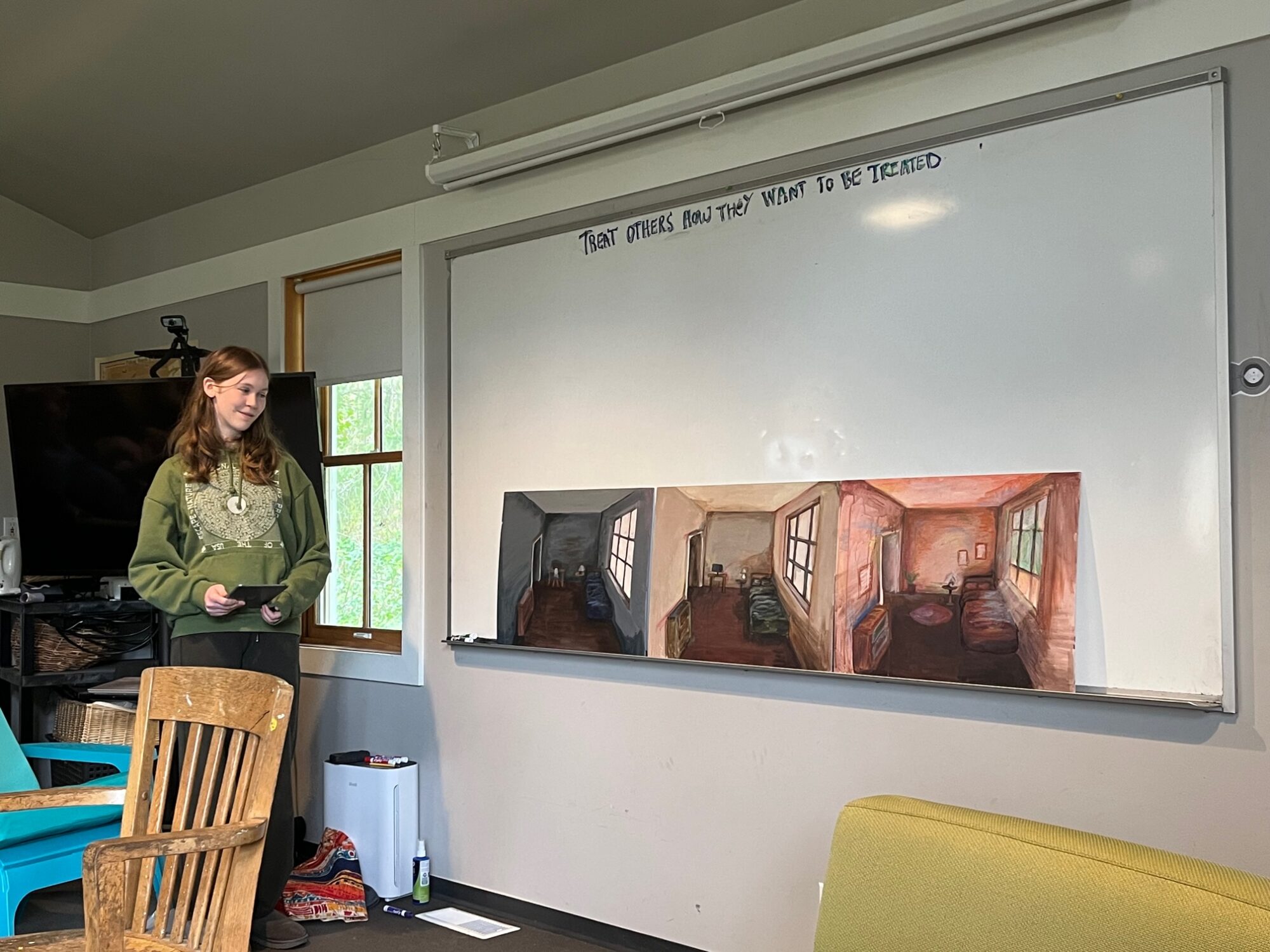Hyla Stories
Student-led Conferences

What does “ownership of learning” look like?
We see it when students take initiative with self-direction; we see it when students are engaged and motivated with a sense of autonomy and choice in their work; we see it when students create original work that shows their learning and understanding. We see it when students take accountability as they articulate their own growth and progress. The most recent round of student-led conferences showcased student ownership with authenticity, vulnerability and creativity. For 8th graders, those conferences were a special chance to focus on a specific span of time within their own lives: their middle school years. Starting with the Hyla’s goals for students, students were given the choice to pick the ones that relate to what they wanted to focus on in terms of their own growth and development.
“I really appreciate that they took it so seriously and earnestly tried to represent their own growth,” said David Maron, who teaches 7th and 8th grade History and worked with students to prepare for their conferences. “It was clear that this felt like a safe space for them to really share, and they took full advantage of that. They got up in front of parents and teachers and confidently told us things that middle schoolers don’t usually share.” As students identified areas of growth as academic learners and as people, they looked back across years of tremendous personal change as adolescents, but also as young people coming of age in a world changed by COVID. They shared their insights with candor and confidence. “Hearing parents say that they learned something new about their child during conferences,” said David, “or that they weren’t expecting to see that level of awareness until their kids got older, was really moving.”
With an intentionally open structure, the work of self-reflection can take on different forms that are unique to each student’s story. “And this really is about storytelling,” said David. “Students worked hard on what they wanted to convey to the audience, but they also spent time with Chris working on what it means to present to an audience and how to consider the audience. In drama class, Chris Soldevilla helped them practice the art of storytelling and the presentation side of it.”
Some students chose to write a letter or an essay and read it. Some students included other elements that helped them convey their deep thinking and self-awareness, like taekwondo, a game show, and three original paintings. One student drilled into the evolution of her sentence structure and writing from 6th to 8th grade. Another changed clothes three times to show how the things he wore at different ages represented where he was emotionally and who he was throughout middle school. These elements worked, David explained, because they weren’t the starting place; instead, they emerged naturally from the hard work of authentic self-reflection and taking responsibility for their own learning. “We started by allowing students to pick which goals they wanted to focus on and as they worked through this pursuit of figuring out how their years have been, they thought of different and personal ways to help convey that, from heart-felt letters and essays to walks around campus.”
These images show how some of our 8th graders taking ownership of their learning during conferences as they articulated their growth by identifying the elements of that growth, such as perseverance, academic stamina, focus, independence, and trust in themselves, to name just a few.
When students are given the opportunity to take ownership of their learning, the autonomy, trust and responsibility they experience leads to other lasting habits and skills, like finding joy in the process; increased intrinsic motivation; comfort asking their own hard questions; and the courage to try new things. Through all of this, students develop a sense of self-efficacy that propels them academically and socially into the high school years.

